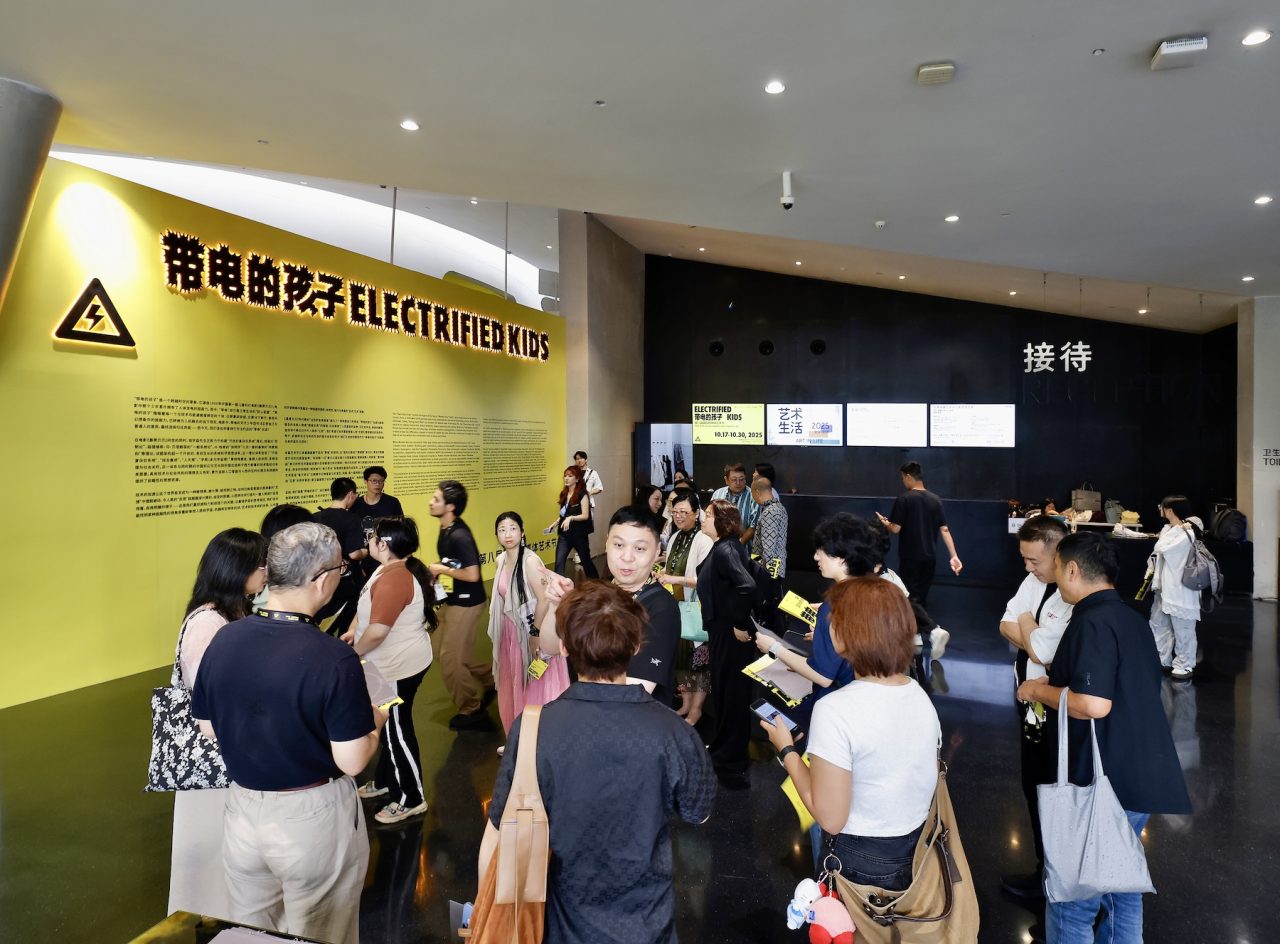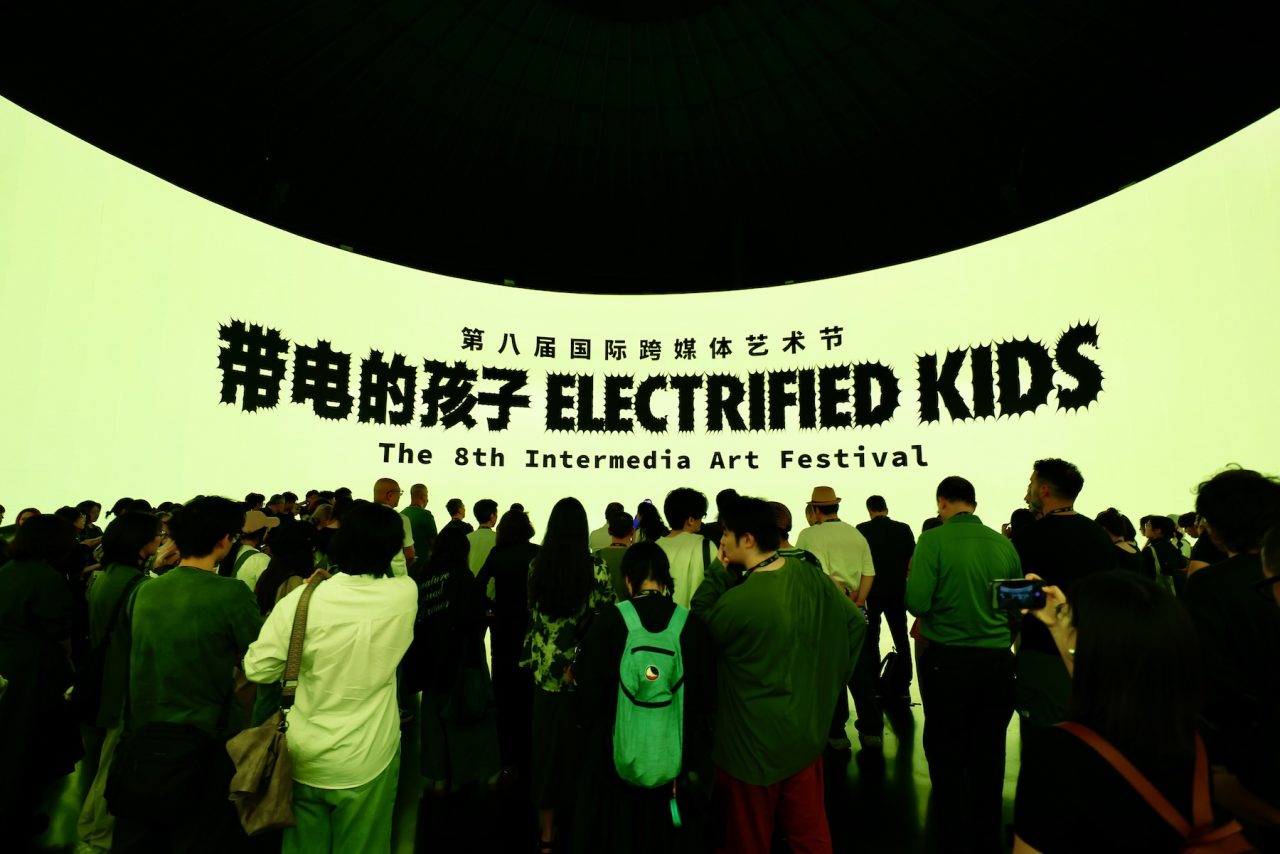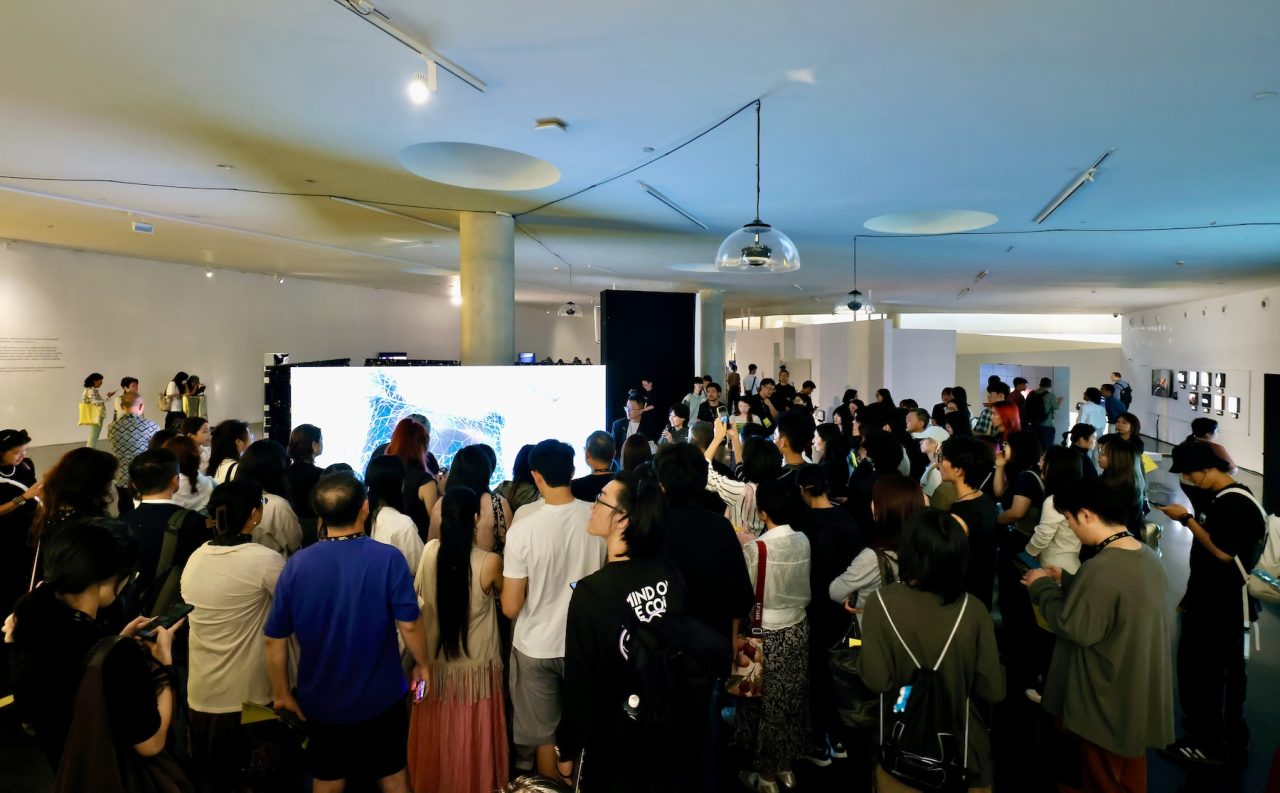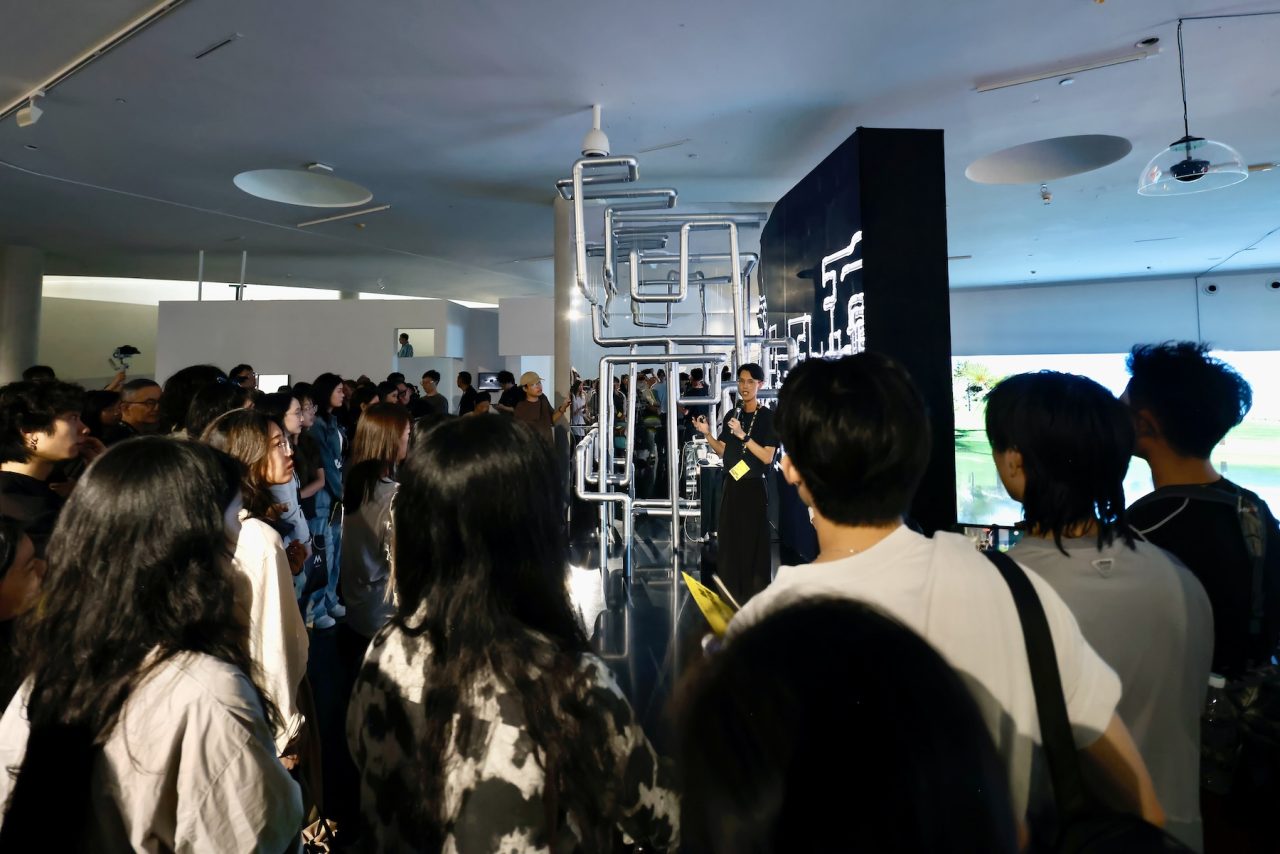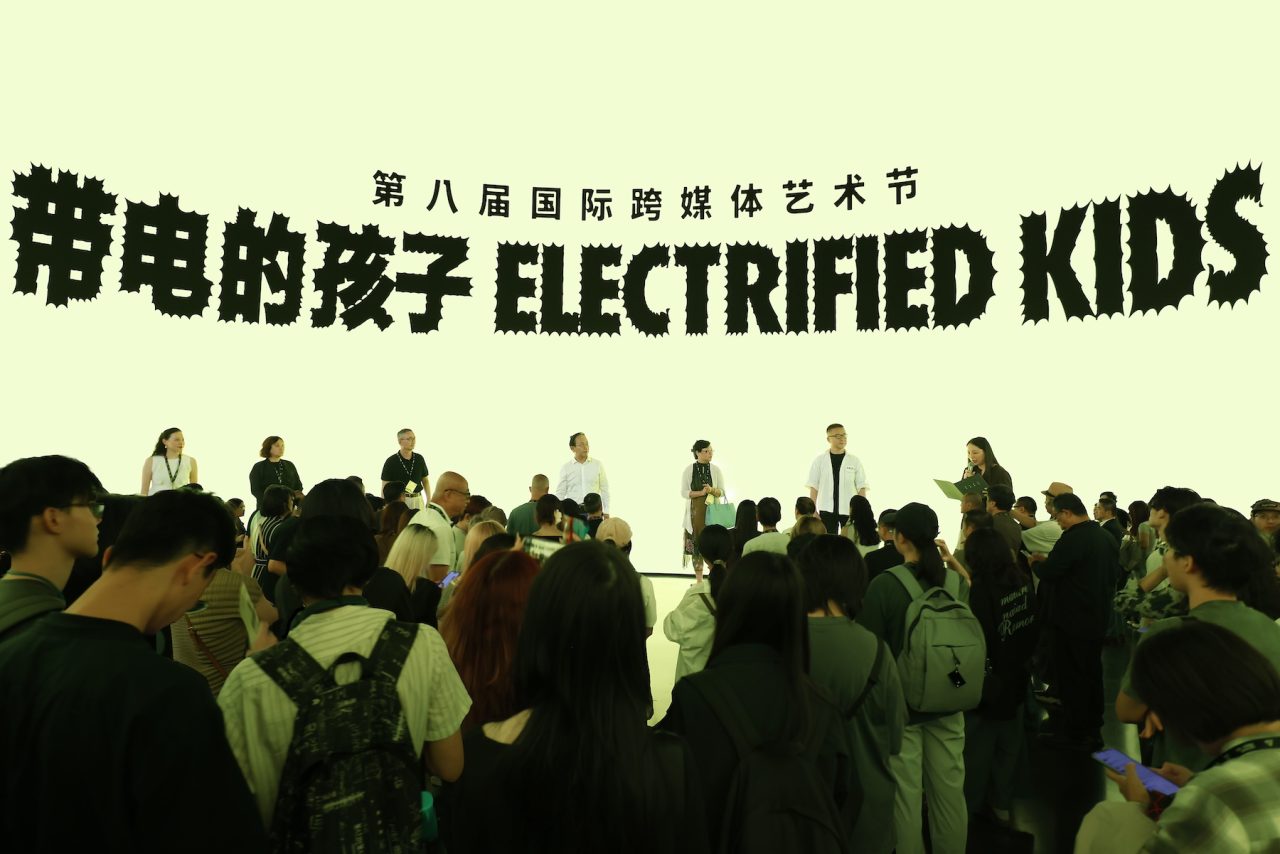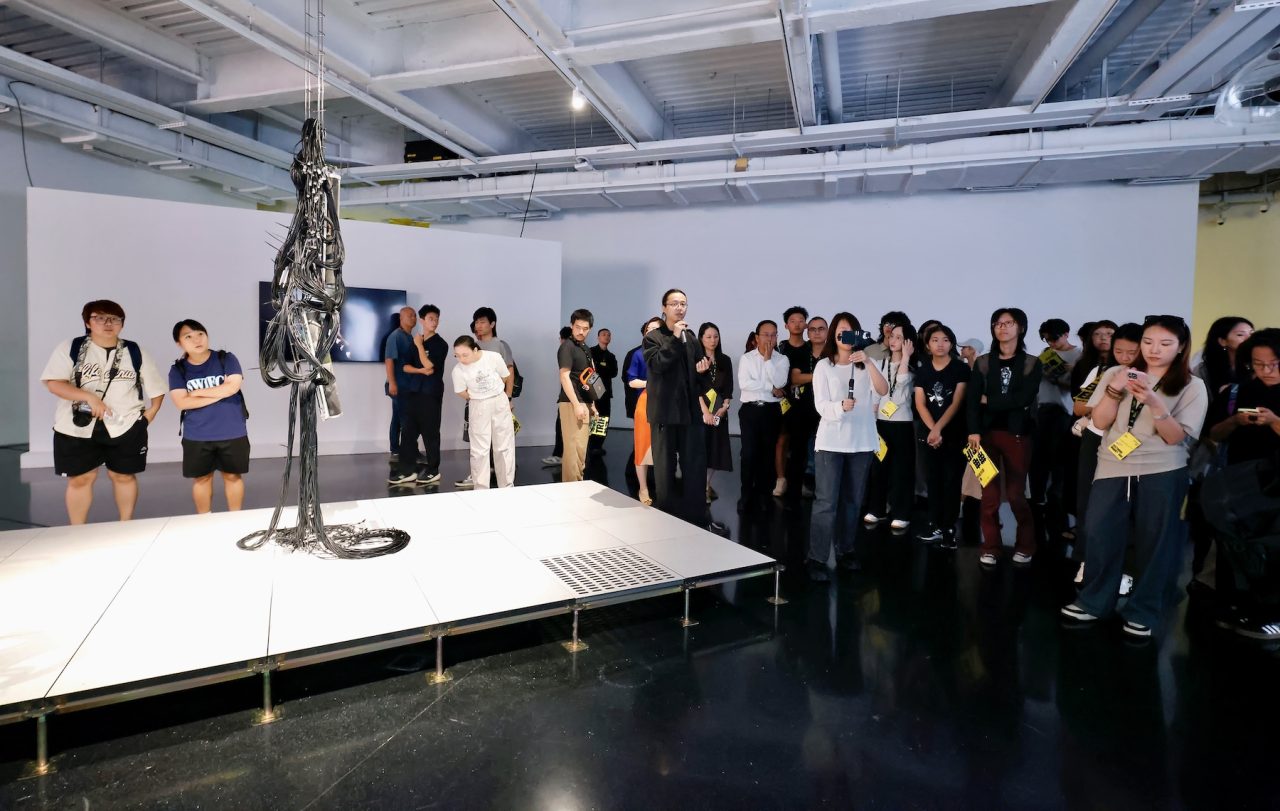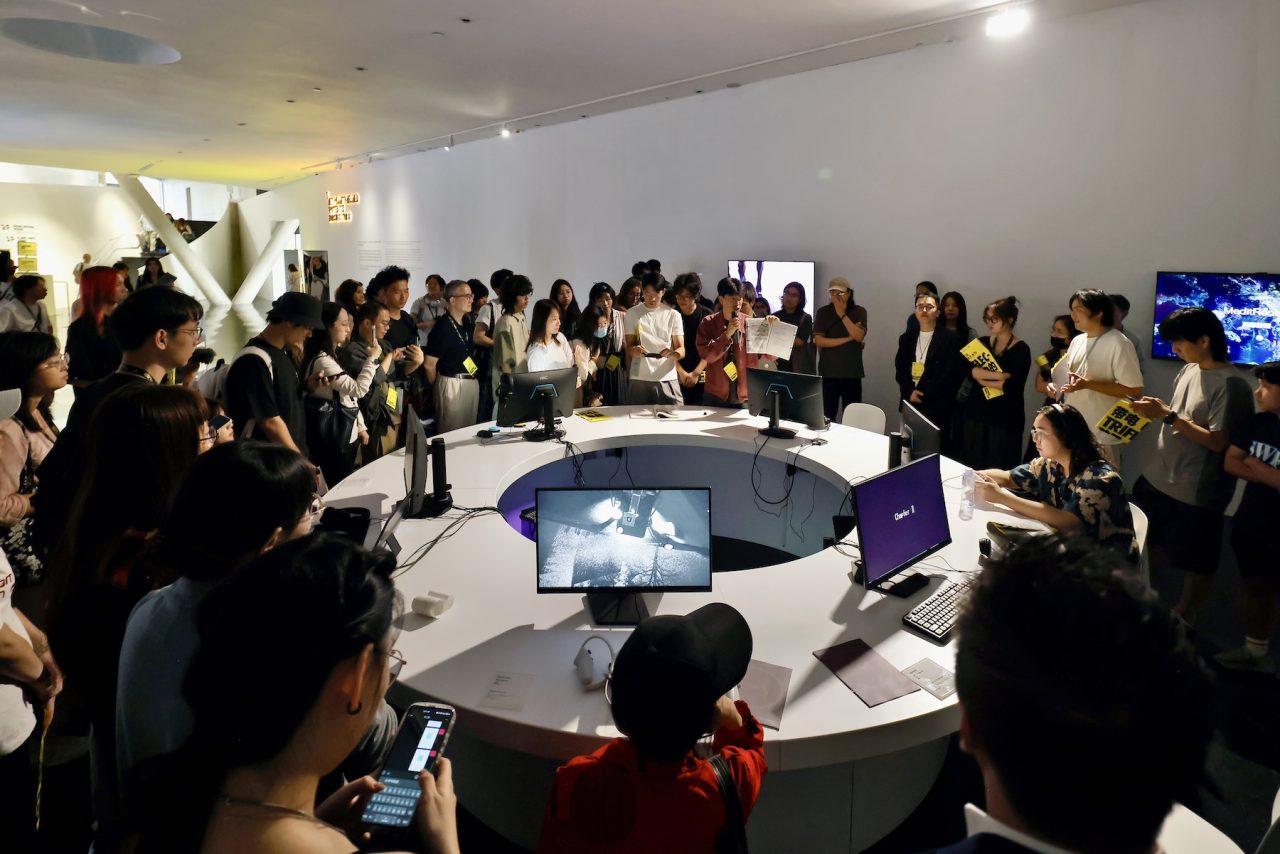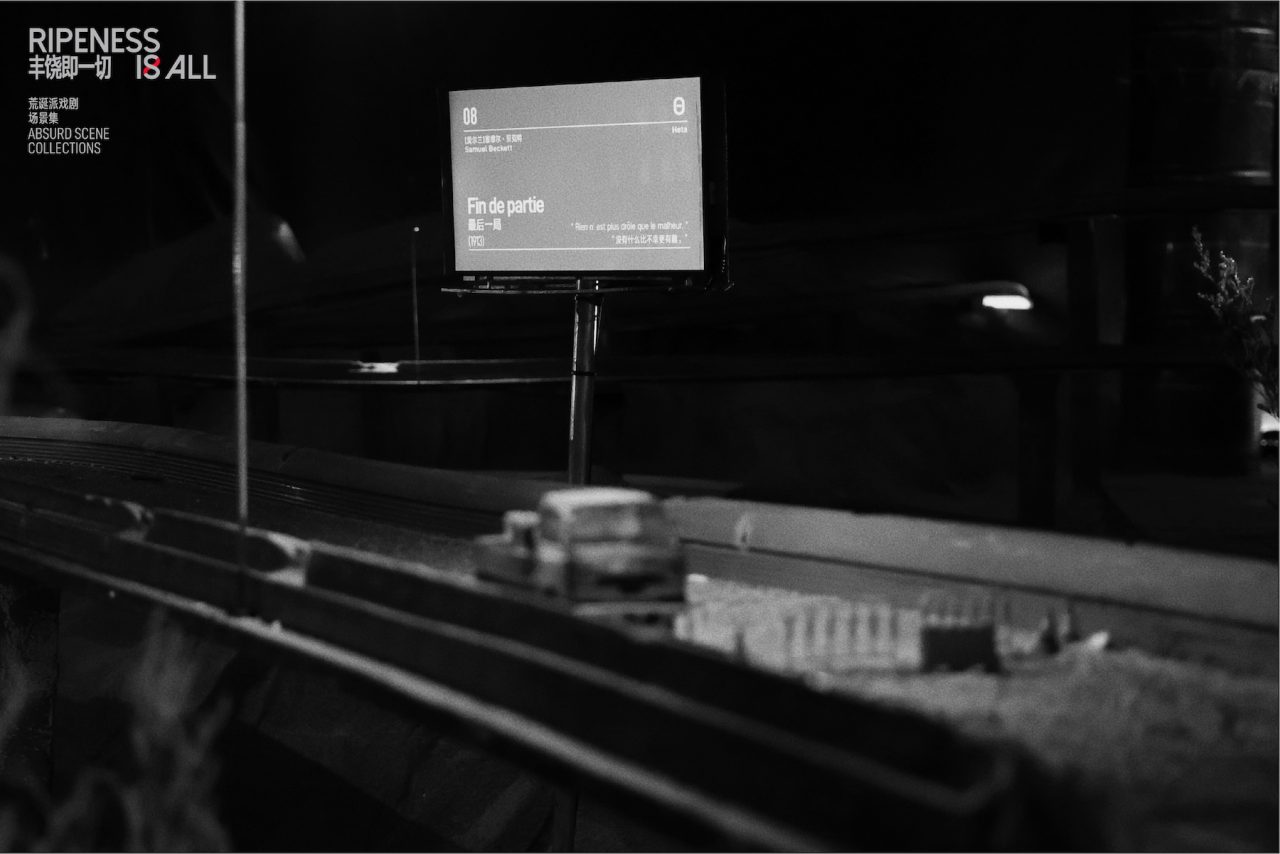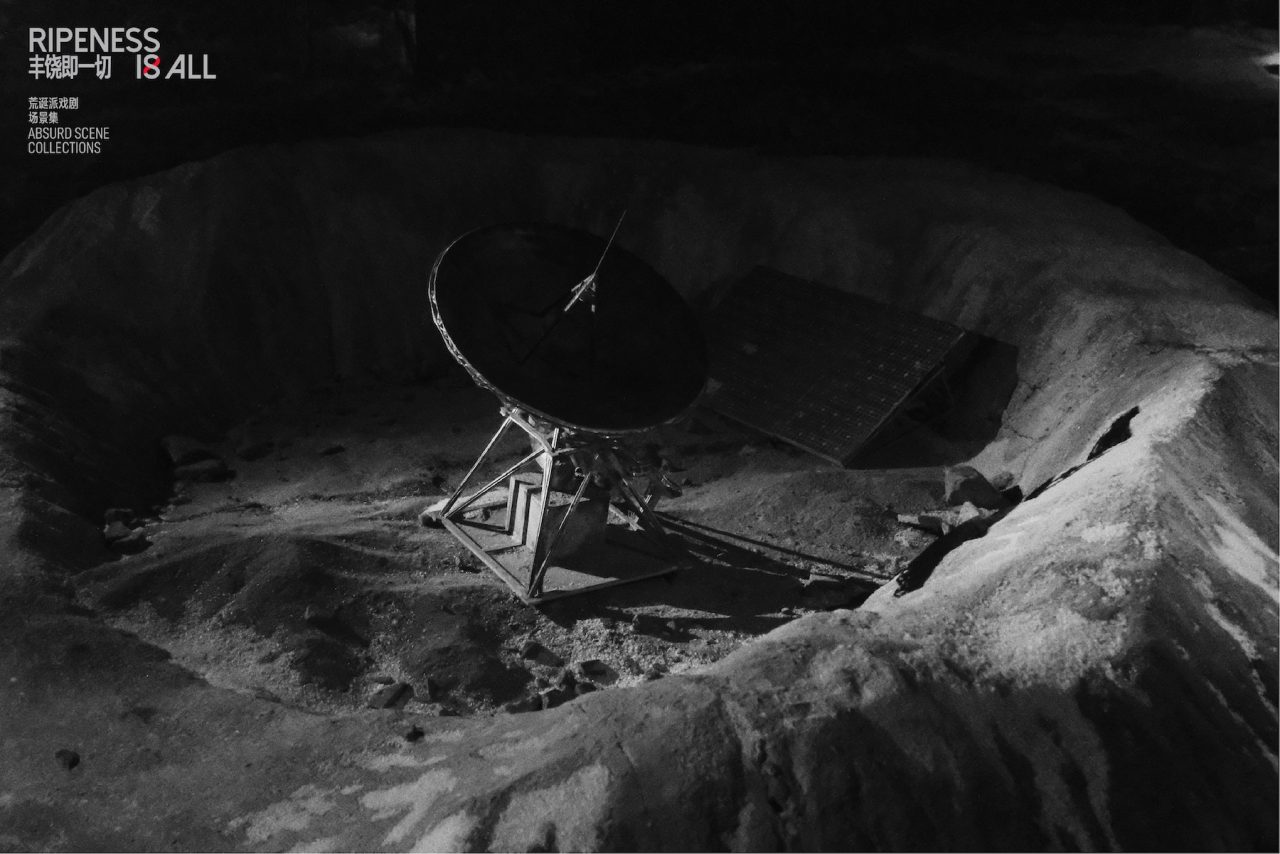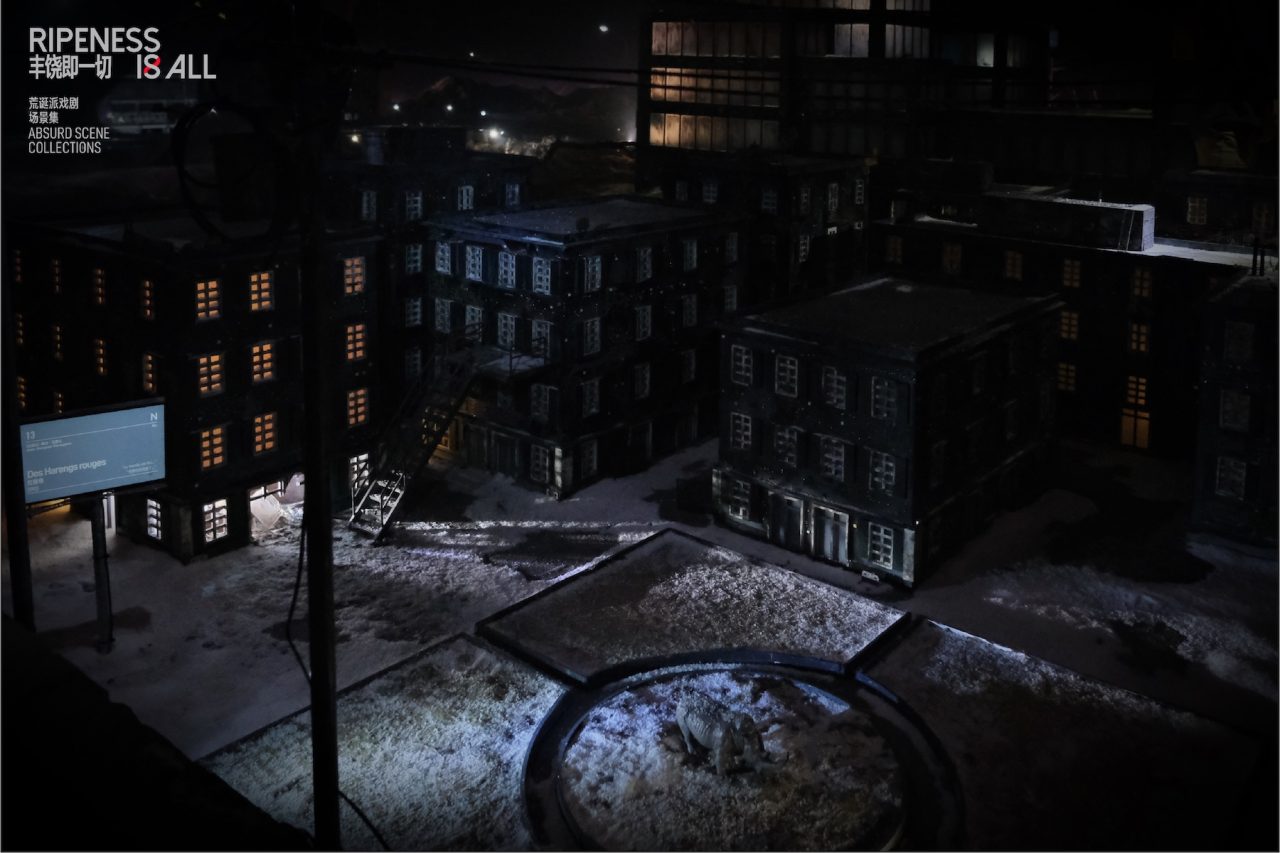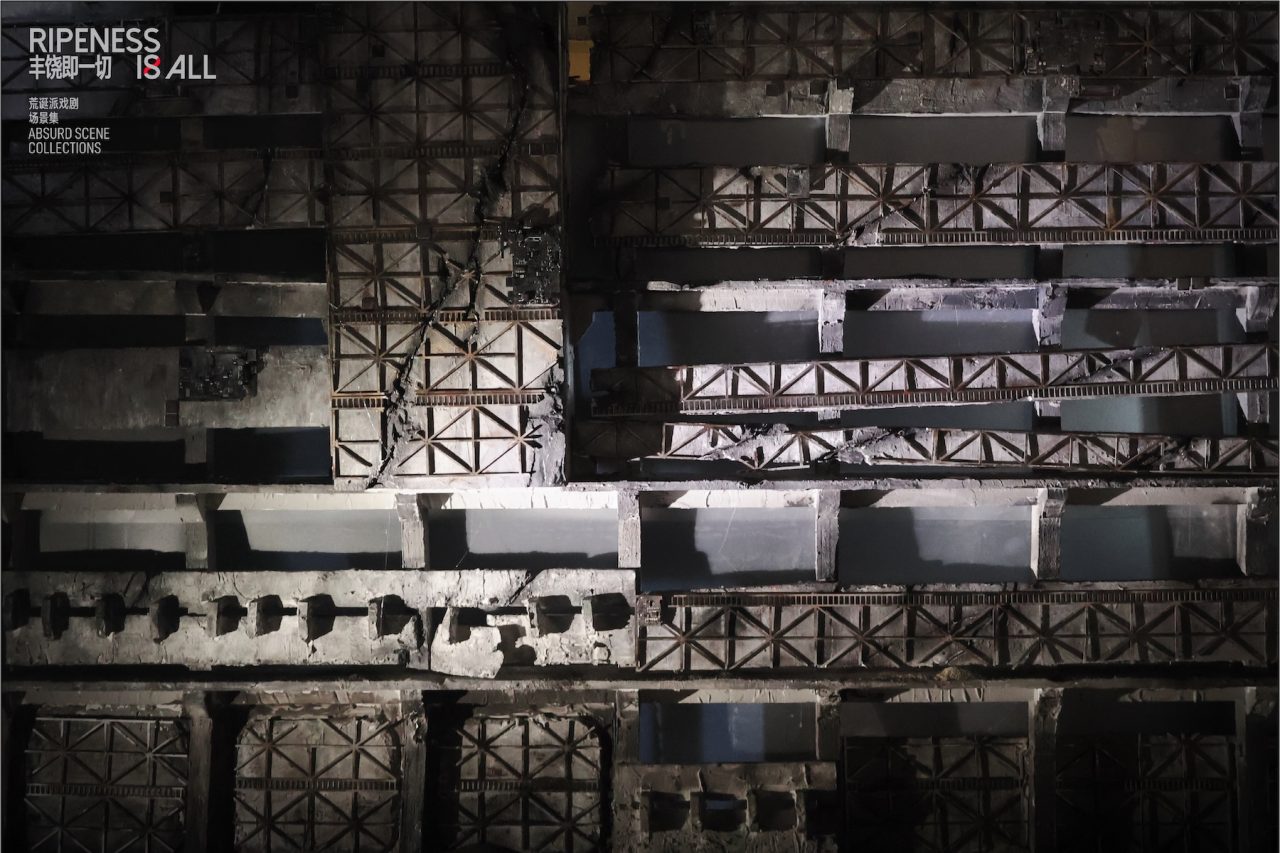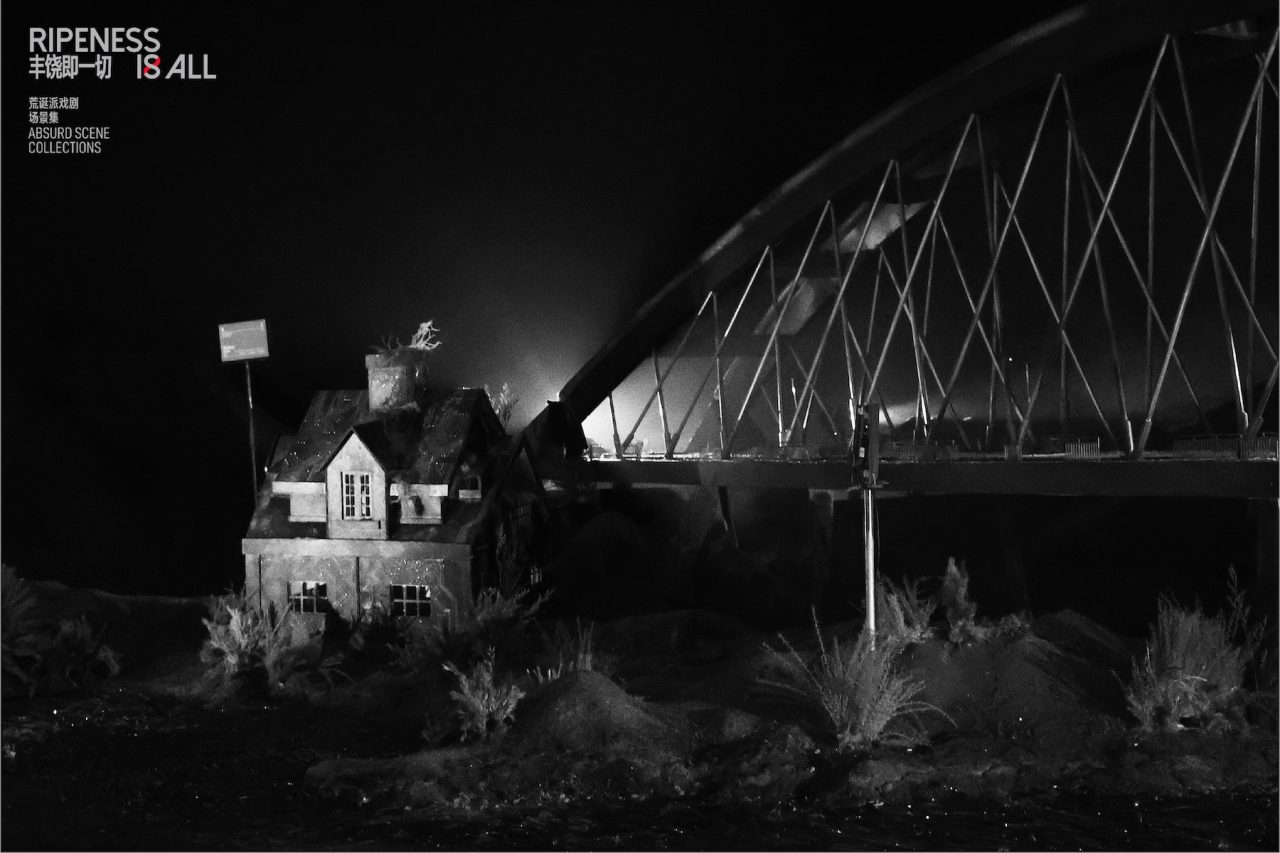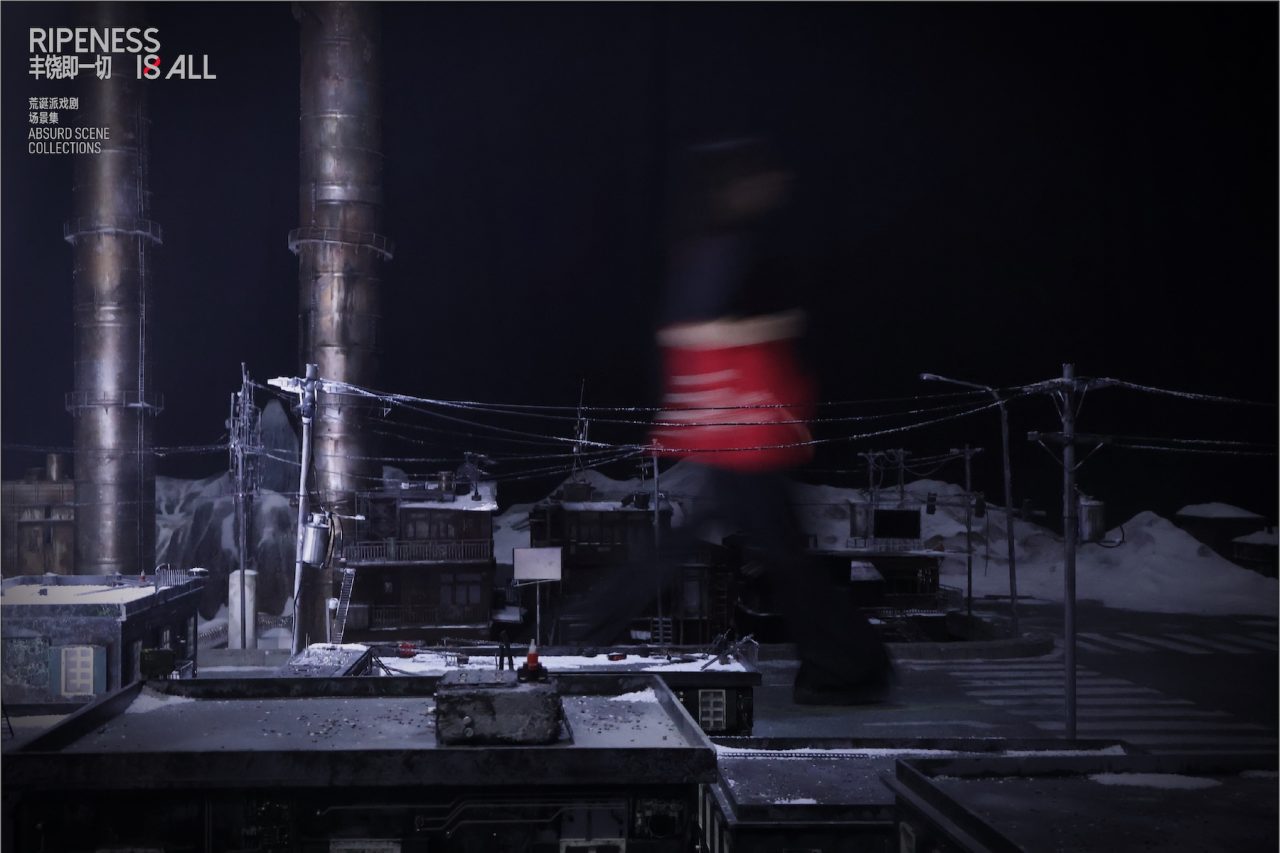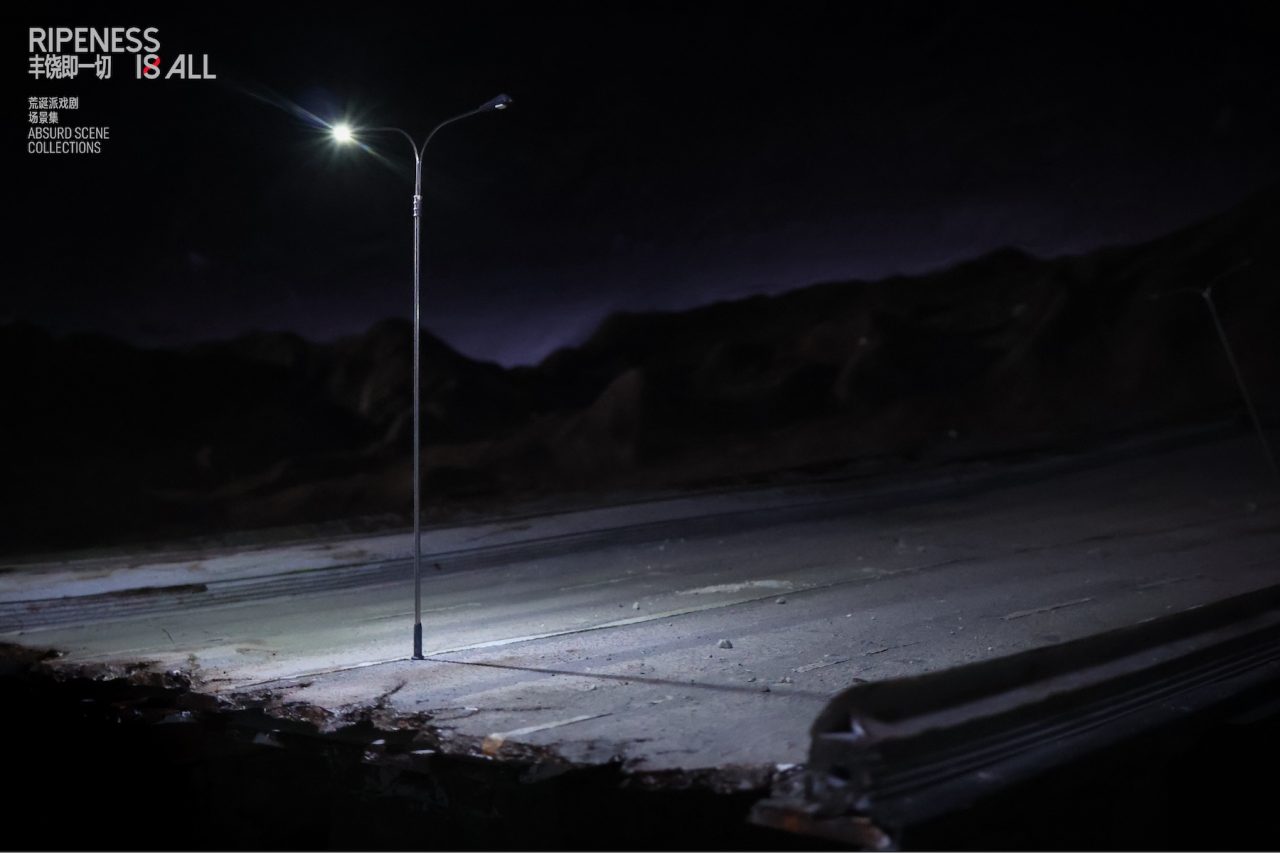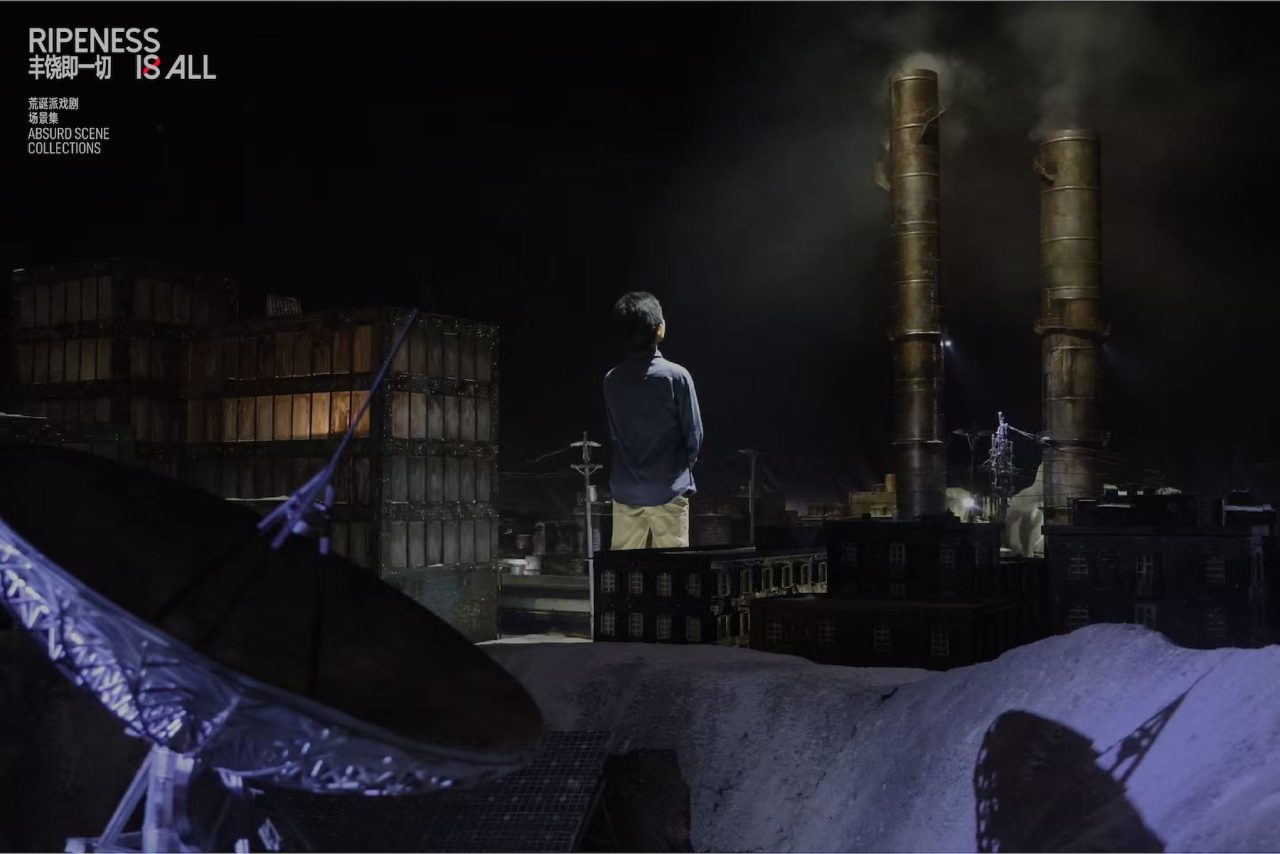ABOUT THE EXHIBITION
The 8th International Intermedia Art Festival, “Electrified Child,” will be held at TANK Shanghai from October 17 to 30, 2025.
The exhibition brings together the works of 85 groups and nearly 200 artists and collectives from 12 countries and regions worldwide. The featured works span a variety of creative mediums, including artificial intelligence (AI) art, virtual reality (VR)/mixed reality (MR) art, generative art, video art, installation art, cross-media mega-structures, audio-visual live performances, and social gaming art. Using the imagery of the “Electrified Child,” the exhibition reflects on every individual deeply intertwined with technology today and raises the question:
As individual lives grow increasingly silent within the framework of technological extension and systemic structures, how will we envision the symbiosis or play between humanity, computational power, and energy?
“Electrified Child” is a trans-temporal image originating from 1988’s *The Electric Boy*, China’s first children’s sci-fi film. In the movie, a boy unexpectedly gains the superpower to generate electricity from his body, whereas today, being “electrified” has become the default setting of daily life. “Electrified Child” metaphorically represents every individual deeply intertwined with technology and energy—navigating through screens, moving under algorithms, where once-imagined sci-fi superpowers have transformed into the present reality of human-machine integration. In the film, the electrified prodigy, unable to bear his difference from ordinary people, ultimately chooses to relinquish his power—but how should we view today’s inescapable state of being “electrified”?
Around the time *The Electric Boy* was released, Qian Xuesen was dedicated to constructing the theory of the “Open Complex Giant System.” Drawing from disciplines such as cybernetics, Ludwig von Bertalanffy’s “General System Theory,” H. Haken’s “Synergetics,” and I. Prigogine’s “Dissipative Structures,” he sought to establish an open, organically growing framework of systems science. This theoretical system includes unique concepts such as “open complex giant systems,” “meta-synthesis,” “human-cosmos worldview,” and “macrocosm (multiverse perspective),” emphasizing human-machine collaboration, systemic governance, and social care. This framework, along with contemporaneous Chinese sci-fi narratives, shaped a technological trajectory and future vision distinct from Western discourses—imbued with an idealism that intertwines technology and society, and offering forward-thinking intellectual resources for current ethical and systemic constructions of AI-human symbiosis.
Technological acceleration has increasingly rendered the world a realm of prediction, calculation, and control. How can we break free from passivity amid the deluge of “feedback” from new intelligent machines, allowing human “reflection” to transcend directly computed, given data—thus forging technology into a mirror for self-observation and self-mastery? This is key to reclaiming human perception and creativity. Following Qian Xuesen’s line of thought, we may discover a transcendent perspective to re-examine the relationships between humanity and the cosmos, machines and living organisms, art and technology—developing from China’s historical context a “tech/art” philosophy that preserves heterogeneity, diversity, tension, and contradiction.
The “future imagination of the past” represented by *The Electric Boy* has become a prophecy reflecting the present. “Electrified Child” also serves as a metaphor for the forthcoming future human or “super-life.” Technology has brought about the extension of human organs, the externalization of memory, and the liberation of the body. When technology ceases to be merely a “phantom limb” of humanity, how will it reshape humans? In the world we are about to face, where will the existence of electrons and machinery, and the consciousness of organic life, lead? How should we perceive the birth and growth of the super-life as “electrified children”?
This art festival explores these “electrified” inquiries across multiple dimensions. In the “My Phantom Limb Voted Yes” section, algorithms and data become invisible sensory extensions; “Abundance Is Everything” uses mixed media and absurd theater to recalculate human dilemmas; “Planet Hertz” listens to the frequencies woven by technological infrastructure and traces of life; “Stroboscopic Inter-times” pieces together remnants of time through visual archaeology of technological memory; the special section “Electronic Epiphany” constructs a testing ground for perceptual reassembly, allowing sparks of insight to flash within signal circuits; the art event “Electronic Assimilation” summons transformations through frequencies. Concurrently, the 10th Annual Conference of the Internet Society contemplates the shift from “inter-connection” to “inter-guidance,” while the 5th Sensibility Forum regards AI as “Human Childhood,” reflecting our own intelligence and emotions.
At this moment, we are all “electrified children,” standing in a future imagined countless times by our predecessors. Electricity has been internalized as our life reality—bringing both confusion and potential. Art does not seek to provide answers but attempts to reconnect the current of perception in technology’s suspended spaces, searching for a language of life-technology—in those fleeting moments of epiphany, we might glimpse the faint dawn of the next future.
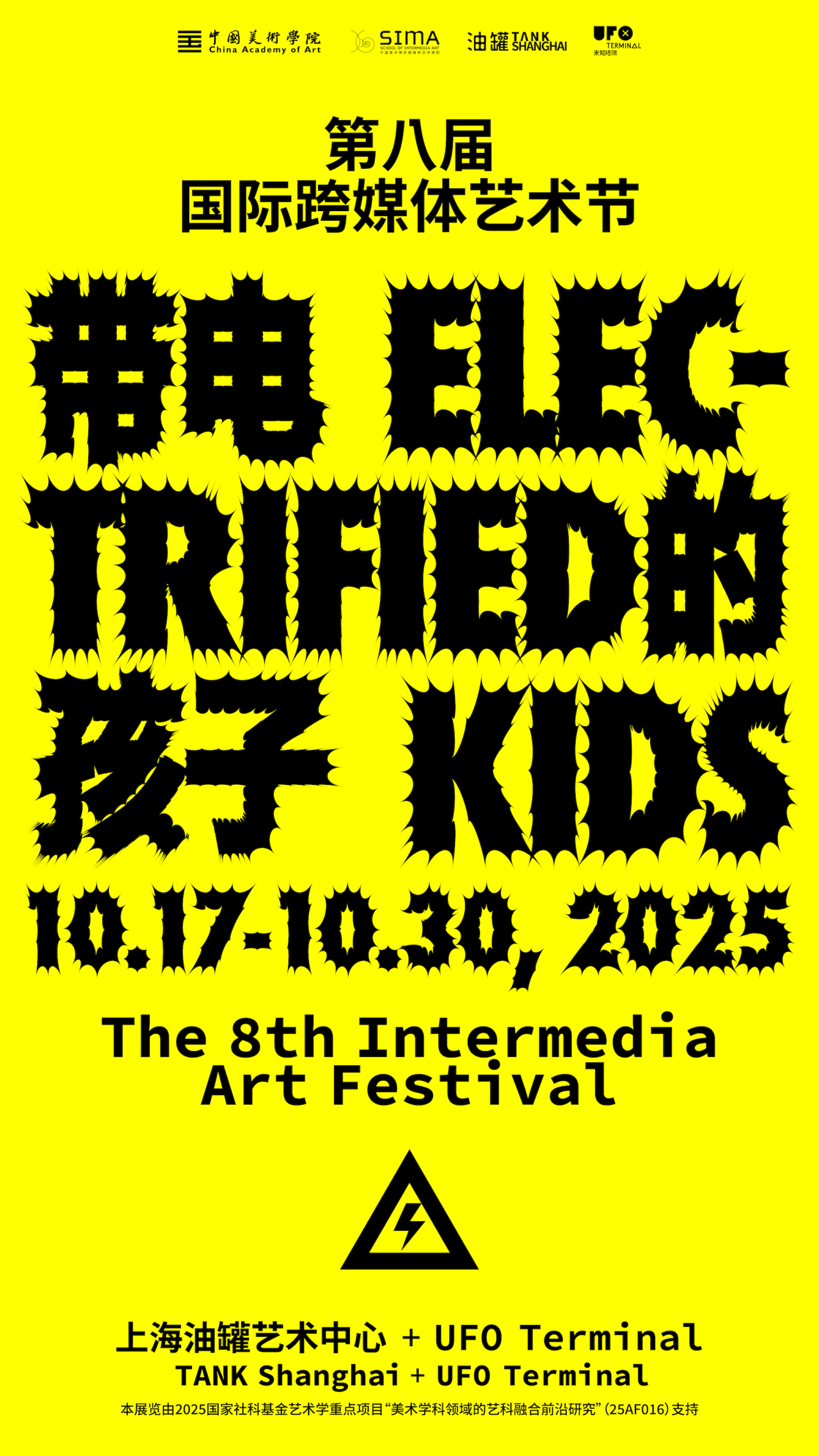
HOST
Organizer: China Academy of Art
Hosted by: School of Intermedia Art, CAAIn
Collaboration with: TANK Shanghai
Chief Planner: Yu Xuhong
Academic Support: Cao Xiaoyang, Guan Huaibin, Mou Sen
Directors: Li Kaisheng, Xu Yuan, Gao Shiqiang, Min Han, Qiao Zhibing
Curator: Min Han
Co-Curators: Wu Ziyang, Wu Juehui, Sun Xiaoyu, Xin Ge
Executive Curators: Liu Beining, Li Xiang, Yang Qichen, Qian Keyi, Huang Jiaying, Yang Yize, Zhang Hexin, Zhang Qiyue, Zhao Lianlian, Jiang Yutong, Ni Ziyi, Chen Pengfan, Song Yao, Shi Yuxin, Zhu Shuran, Chen Wei, Li Yixiao, Zhan Chengzhe, Hu Wei
Exhibition Coordination: Jiang Feiran, Mei Yuezi, Ma Yuanchi, Zhang Jiale, Zheng Lizhen, Wang Shuyan, Han Yuan, Zhu Shenjue, Du Runfan, Lin Zhihui
Visual Design: Dandelion Design Lab
Special Acknowledgements: Huang Sun Quan, Tang Xiaolin, Cao Shu, Rhett Tsai, Liu Tian
TANK Shanghai Team: Zhang Xiaodong, Qu Yang, Gu Yujun, Zeng Yuxin, Wang Qingyang, Yu Yawen
ARTIST
Paula Gaetano Adi, Bignia Wehrli, Peter Burr, Justin Bortnick, Cai Yuxuan, Rhett Tsai, Cao Shu, Kachi Chan & Pat WingShan Wong, Chen Jianrui, Chen Yukai, Bridget DeFranco, Chen Pengfan, ChenXin + Mice, ChenZijian, Cui Lintao, Harun Farocki, Fan Xianxin, Matthew D Gantt, Mark Fingerhut, Gan Yixin, Gao Xiong, Guan Zishu, Guo Cheng, Raven Kwok × 3ASiC, He Jiaxuan, anGy:he, Ho Tzu Nyen, He Zike, Huang Jiaxi, Huang Sunquan, Jiang Yuyang, Jin Tao, Jin Zhexin, Kang Kaiwen, Kan Zihan, Li Shulin, Li Yuchan, Liang Xiaoming, Lin Ke, Lin Youshun, Joanna Lyu, Liu Chuang, Liu Guangli, Lau Wai, Lü Yijie. MSG Team, Mou Sen, Xin Ge, Ni Ziyi, Mei Yuezi, Han Yining, Hu Xinting, Ruan Xiaofan, Zhang Shiwen, Ouyang Mingjun, Ye Yanfei, Yang Wenru, Zhang Yuanyuan, Feng Xinying, Huang Caifeng, Lin Peihang, Zhou Wenyou, Qian Yuda, Xu Beier, Zou Zhihan, Yin Han, Pan Kejia, Zhang Yanshu, Yan Sirui, Luo Xiyu, Yin Yujing, Yu Kexin, Chen Jingjing, Song Fuyang, Lin Junxiang, Lin Kexin, Liu Siyuan, Huang Yingyi, Cheng Lingfeng, Ye Fangshuo. Peng Yiwei, Qian Keyi, Total Refusal (Susanna Flock, Adrian Jonas Haim, Jona Kleinlein), SANGHEE, Shi Qing, Experimental Art Department Team (Wu Qiong, Zhu Xi, Zhang Li, Lao Xiaowu, Huang Yixian, Hu Antong, Yoshida Haruka, Jing Xueyi, Liu Mengqi, Lu Yifu, Ouyang Linfeng, Peng Xi, Sshao Yujie, Tang Jiayang, Wang Qiuling, Wang Yixin, Wang Yujie, Wu Hanqi, Zhang Zhulian), Shu Qi, Shuangqi Wu, Song Tianyue, Sun Xiaoyu, Sun Yefan, Wang Ji, Ong Kian Peng, Wang Jing, Wang Xinyue, WZH.VALLEY, Wei Handan, Wei Wei, Wan Senman, Wu Fan, Wu Ziyang, Xie Ruichi, Xu Nuo, Xu Wenqiu, Yan Wendi, Yang Jinglei, Yang Shuyu, ZunYuH, yuri, Zhao Zilin, Zhang Zhenan, Zhang Li, Zhang Yi, Zhou Zhihua, Zhao Hangchen, Zhao Rundong, Zheng Ruyi, zzyw
CHAPTER I: My Phantom Limb Voted Yes
Physical robots trek and expedition through rugged mountains, while digitally modeled humans languish in sorrow or break through bewildering paths within virtual worlds. The “phantom limb” is a bodily illusion: the lost limb still seems present, faintly aching and subtly stirring. It is not just sight, sound, and touch—the paths of our thoughts and the stories of our memories are deeply interwoven with technology. Each person grows invisible “phantom limbs”: algorithms become extended senses, data flows like flesh and blood, while silicon-based collective memories resemble an underground river, perpetually on the verge of overflowing, already carrying away our agency in a relentless surge. For the “electrified child,” the “phantom limb” is both the memory and perception severed by technology and the contradictory vote of approval we cast toward a new world.
隐形人-1280x720.png)
CHAPTER II: Ripeness Is All
The Media Performance section, titled “Ripeness Is All – Absurd Scene Collections,” responds to the overarching theme of “Electrified Child.” As a form of cross-media mega-structure, it brings together large-scale, mixed-media creative practices through works in diverse specific mediums—curating as performance, and performing as curation. With initial concepts of “π (boundary/cycle),” “calculus (infinite division and summation),” and “Kenoma and Pleroma (a cosmic framework of void and fullness),” and using the “interior of cloud computing/large-scale models” as its spatial motif, the section organizes works according to the sequence of the 24 Greek letters and stages them through absurdist theatrical scenes. This approach explores the origins and evolution of visually representing human dilemmas.
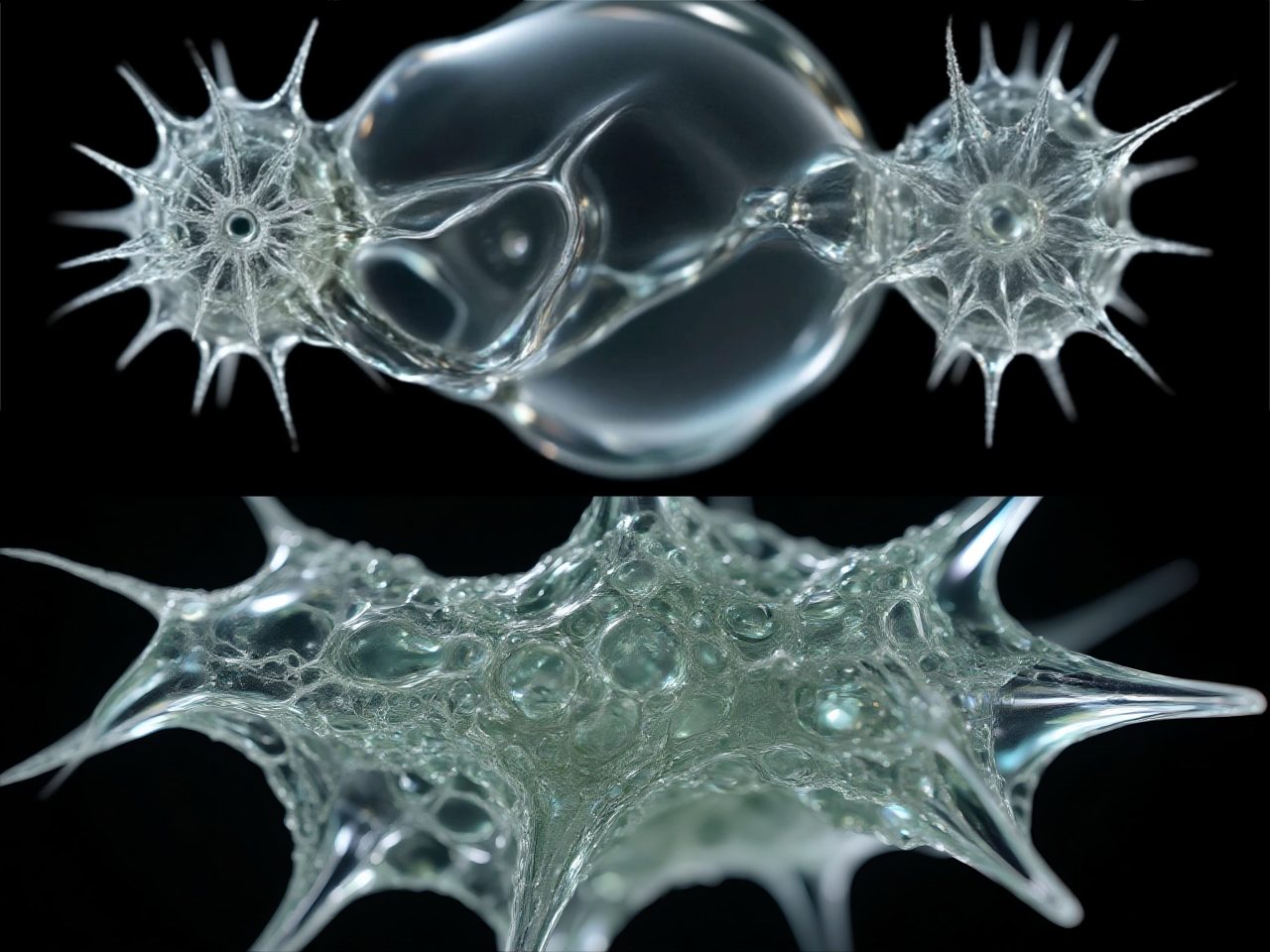
CHAPTER III: Planet Hertz
Themes such as technological infrastructure, energy networks, computational flows, environmental shifts, and the reexamination of traditions all reveal a desire to recalibrate the dysfunctional state among humanity, technology, and the planet. Come and listen to the subtle reverberations of the planet’s frequency amid technological tremors: seek the new life that may emerge from digital ruins, question the geological traces of technological civilization, develop the latent imprints in media memory, imagine the shared recollections of animals and silicon-based entities, explore how energy flows reshape geography and culture, and uncover the eternal struggle between control and freedom in the creative process… All of this aims to capture a frequency concerning coexistence, consumption, and memory, thereby transcending instrumentalized desensitization and seeking a poetic possibility for humans to coexist with energy, computation, and the environment. Tune in to the planet’s hidden hertz: there, you will find the infra-roar of technological objects and the faint signals of forgotten life forms. In the exchange of energy and the flow of information, we hear a rewoven rhythm of the world.
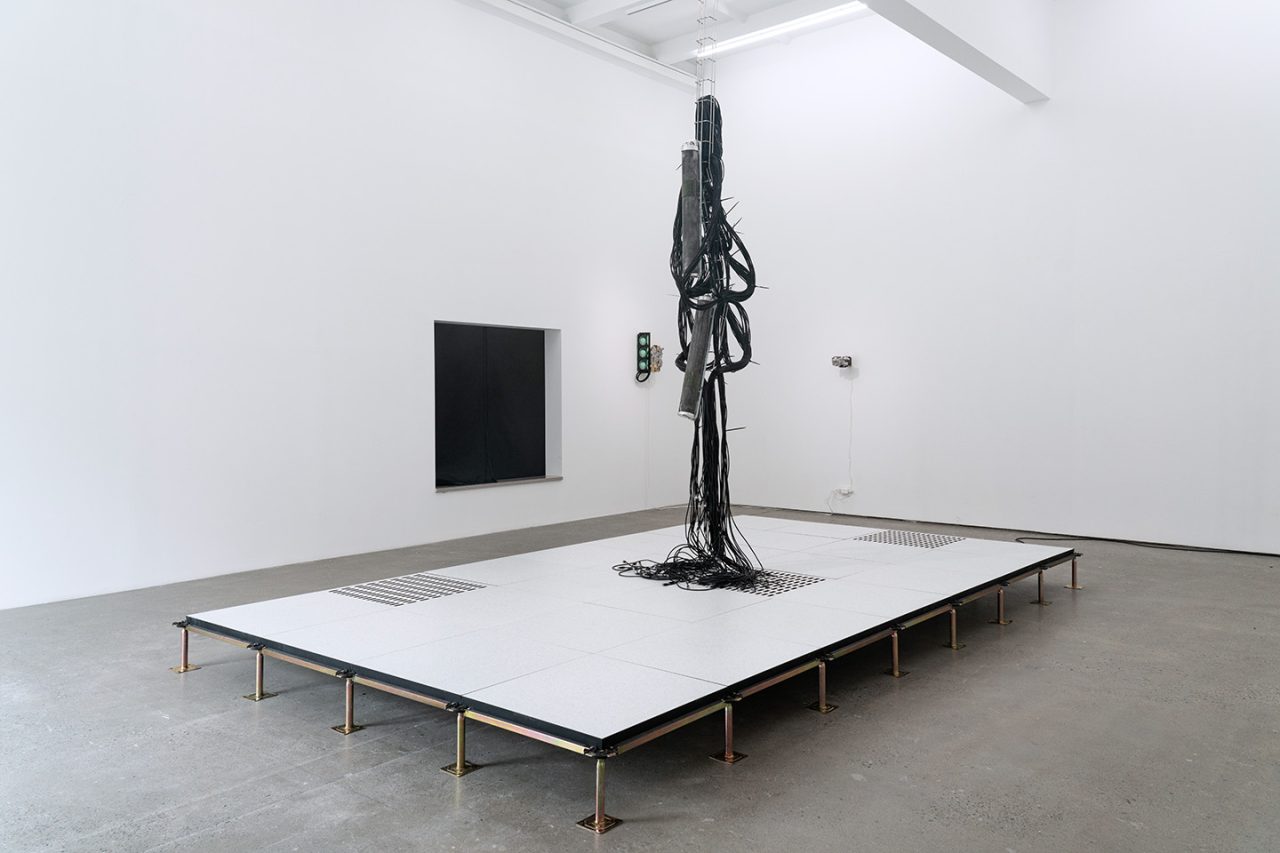
CHAPTER IV: Strobe Historia
We do not live along a continuous line of history, but are encoded within the strobe between electronic media and historical memory. Each generation imagines the future, and people precisely inhabit this polyphonic echo of the “past future.” Today, however, our capacity to imagine the future is trapped in a cycle of technological amnesia and anxiety of obsolescence, while our expectations of the world are swayed by speculation about technology. “Electrified Child” seeks to forge an artistic tool or craft of technological memory—drawing from the traces left by technological history in individual lives and emotions, from the recollections of technological transformations and family life, and from the technological memories, social perceptions, and scientific vocations shared across generations. Through this, we may break through the illusory surface of contemporary technological interfaces, reestablish anchors for reflection and creation, and shape paths and textures genuinely relevant to each individual—thereby reclaiming a true “tomorrow” in the process of retrieving our own “yesterday.”
-古尔德-1280x720.jpg)
-瓜纳克克斯.png)
